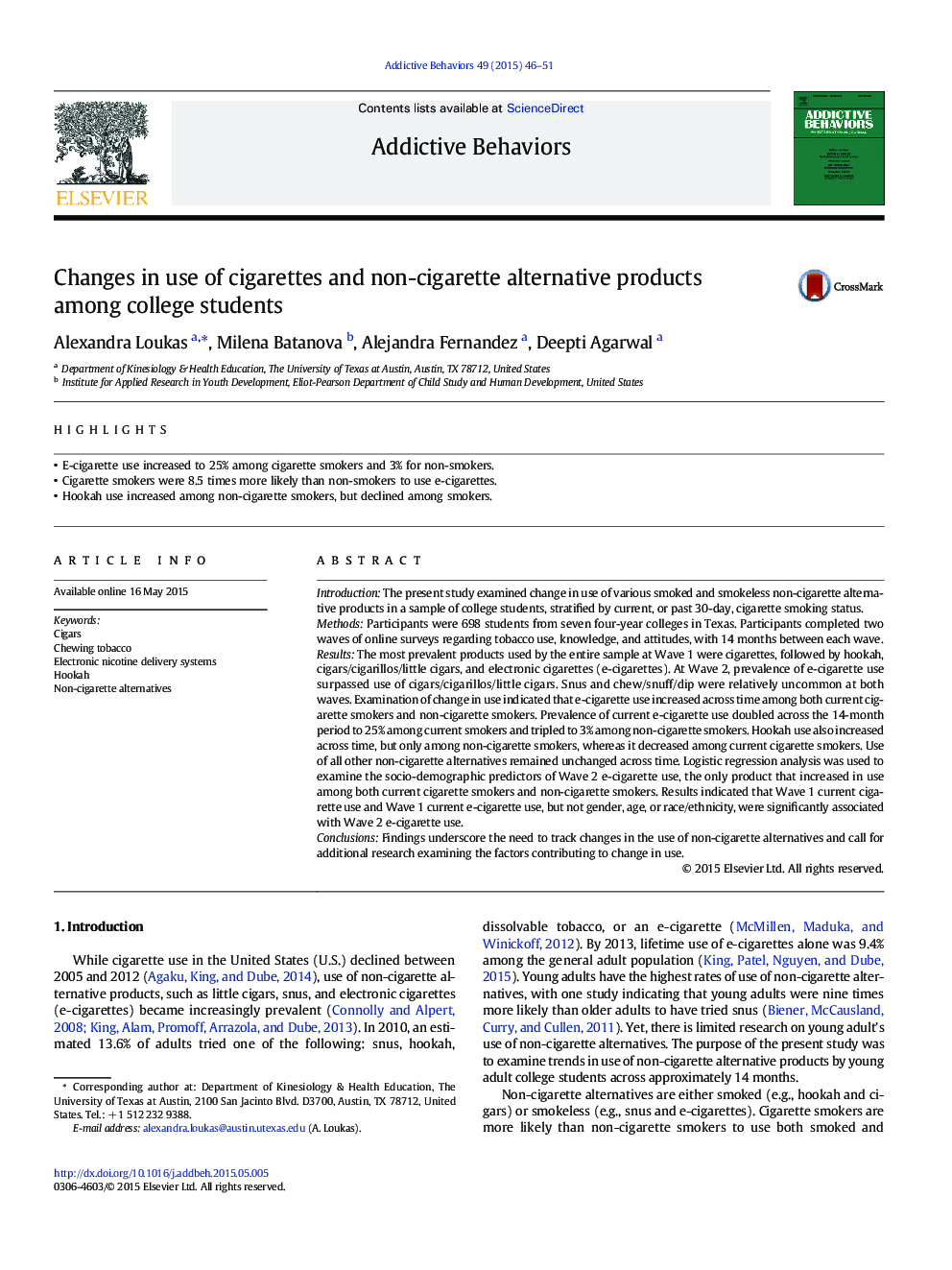| Article ID | Journal | Published Year | Pages | File Type |
|---|---|---|---|---|
| 898689 | Addictive Behaviors | 2015 | 6 Pages |
•E-cigarette use increased to 25% among cigarette smokers and 3% for non-smokers.•Cigarette smokers were 8.5 times more likely than non-smokers to use e-cigarettes.•Hookah use increased among non-cigarette smokers, but declined among smokers.
IntroductionThe present study examined change in use of various smoked and smokeless non-cigarette alternative products in a sample of college students, stratified by current, or past 30-day, cigarette smoking status.MethodsParticipants were 698 students from seven four-year colleges in Texas. Participants completed two waves of online surveys regarding tobacco use, knowledge, and attitudes, with 14 months between each wave.ResultsThe most prevalent products used by the entire sample at Wave 1 were cigarettes, followed by hookah, cigars/cigarillos/little cigars, and electronic cigarettes (e-cigarettes). At Wave 2, prevalence of e-cigarette use surpassed use of cigars/cigarillos/little cigars. Snus and chew/snuff/dip were relatively uncommon at both waves. Examination of change in use indicated that e-cigarette use increased across time among both current cigarette smokers and non-cigarette smokers. Prevalence of current e-cigarette use doubled across the 14-month period to 25% among current smokers and tripled to 3% among non-cigarette smokers. Hookah use also increased across time, but only among non-cigarette smokers, whereas it decreased among current cigarette smokers. Use of all other non-cigarette alternatives remained unchanged across time. Logistic regression analysis was used to examine the socio-demographic predictors of Wave 2 e-cigarette use, the only product that increased in use among both current cigarette smokers and non-cigarette smokers. Results indicated that Wave 1 current cigarette use and Wave 1 current e-cigarette use, but not gender, age, or race/ethnicity, were significantly associated with Wave 2 e-cigarette use.ConclusionsFindings underscore the need to track changes in the use of non-cigarette alternatives and call for additional research examining the factors contributing to change in use.
